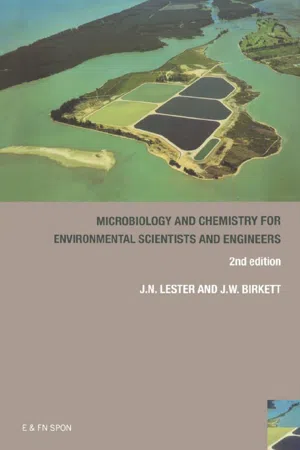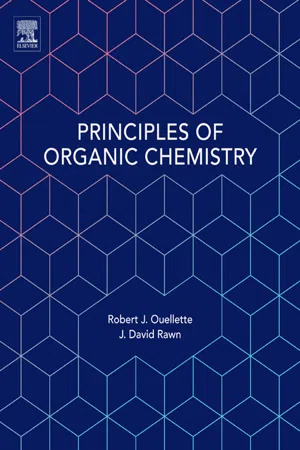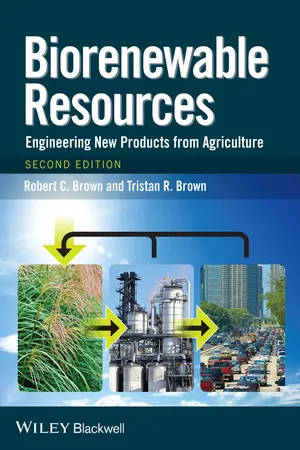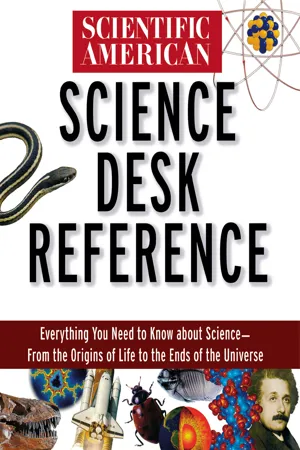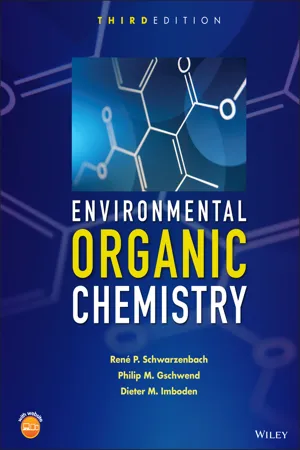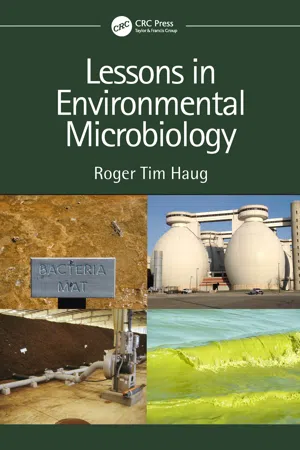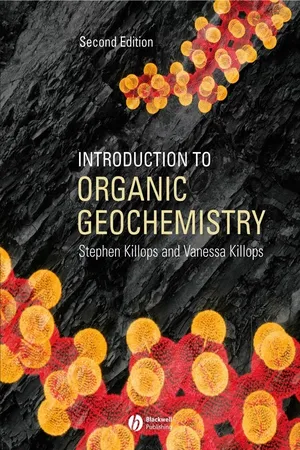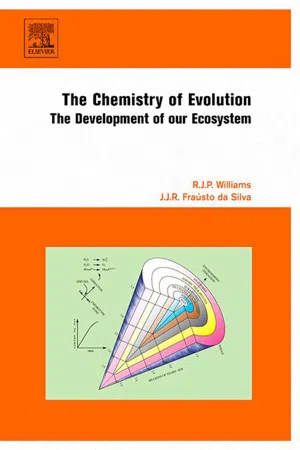Chemistry
Organic Compounds
Organic compounds are molecules that contain carbon atoms bonded to hydrogen, and often other elements like oxygen, nitrogen, sulfur, and phosphorus. They are the basis of life and are found in all living organisms. Organic compounds have diverse structures and functions, and they form the foundation of many important substances, including carbohydrates, proteins, lipids, and nucleic acids.
Written by Perlego with AI-assistance
Related key terms
10 Key excerpts on "Organic Compounds"
- Jason Birkett, John Lester(Authors)
- 2018(Publication Date)
- CRC Press(Publisher)
Chapter 7Organic chemistry
7.1 Introduction
Organic chemistry is the chemistry of carbon and its compounds. Living systems form organic molecules and as such they are therefore essential to life. Proteins, nucleic acids, carbohydrates and fats are all Organic Compounds (i.e. the principal component is carbon).Carbon-containing compounds were originally termed “organic” because it was thought that they could only be produced by living plants and animals. However, in 1828 Freidrich Wöhler converted lead cyanate (an inorganic compound) into urea (an organic compound) by treating it with aqueous ammonia.Since this discovery, more than six million Organic Compounds have been synthesized. These range from molecules such as penicillin to artificial sweeteners like saccharin.Organic chemists are generally concerned with the various pathways involved in synthesizing Organic Compounds and improving the yield of the final product. Environmental chemists and engineers wish to know about the degradation of organic chemicals and how they will interact with all the environmental compartments (i.e. air, water and land). In order to achieve this, one must have a fundamental knowledge of organic chemistry. This chapter discusses these fundamental aspects and the various classes of Organic Compounds.7.2 The carbon atom
Carbon can form a vast amount of compounds. This is partly due to the fact that a carbon atom contains four electrons in its outer shell and can thus form four single covalent bonds by sharing with four electrons from other atoms. Therefore, the carbon atom will attain a stable electronic configuration (i.e. eight electrons in the outer shell). Carbon can also form covalent bonds with other carbon atoms, a property which is essentially unique to carbon (although silicon also exhibits this). This can result in carbon chains of enormous length and variation. Some examples of this are shown in Fig. 7.1 .Fig. 7.1 Different arrangements of carbon chains.- eBook - ePub
Water Quality Data
Analysis and Interpretation
- Arthur Hounslow(Author)
- 2018(Publication Date)
- CRC Press(Publisher)
CHAPTER 7Organic Chemistry NomenclatureIntroduction
Organic Compounds are composed primarily of variable numbers of carbon and hydrogen atoms, usually with smaller numbers of oxygen, nitrogen, sulfur, phosphorus, and halogen atoms—chlorine, fluorine, and bromine. Other elements may be incorporated in Organic Compounds to form organometallic compounds, but those will not be discussed here. Although specific references are generally not practical in this chapter, the text “Nomenclature of Organic Compounds” by Fletcher et al. (1974) was relied on extensively when nomenclature problems arose.The carbon atoms are joined to one another as chains, branched structures, or in rings. The carbon-carbon bonds may be single (sharing one electron pair), double (sharing two electron pairs), or triple (sharing three electron pairs). The most important ring structure, benzene, is one that consists of six carbon atoms and six hydrogen atoms in a planar ring. If a noncarbon atom replaces a carbon in a ring structure, the compound is called a heterocyclic compound. Most of the variation among Organic Compounds is caused by special groups of organic atoms attaching to the carbon atoms. They are called functional groups and contain at least one noncarbon atom. It is the presence of these groups that give Organic Compounds their unique properties. Organic Compounds containing only carbon and hydrogen are called hydrocarbons. If they contain one or more halogen atoms they are called halogenated hydrocarbons. They may be divided into two groups, depending on whether the benzene ring is present or not. These are listed in Table 7.1 .Early Organic Chemistry
The term organic chemistry was originally used to designate those substances of plant and animal origin thought to be more closely related to one another than to subsiances of mineral origin. It was known that organic substances form CO2 and H2 - eBook - ePub
- Robert J. Ouellette, J. David Rawn(Authors)
- 2015(Publication Date)
- Elsevier(Publisher)
1Structure of Organic Compounds
1.1 Organic and InOrganic Compounds
Organic chemistry began to emerge as a science about 200 years ago. By the late eighteenth century, substances were divided into two classes called inorganic and Organic Compounds. InOrganic Compounds were derived from mineral sources, whereas Organic Compounds were obtained only from plants or animals. Organic Compounds were more difficult to work with in the laboratory, and decomposed more easily, than inOrganic Compounds. The differences between inorganic and Organic Compounds were attributed to a “vital force” associated with Organic Compounds. This unusual attribute was thought to exist only in living matter. It was believed that without the vital force, Organic Compounds could not be synthesized in the laboratory. However, by the mid-nineteenth century, chemists had learned both how to work with Organic Compounds and how to synthesize them.Organic Compounds always contain carbon and a limited number of other elements, such as hydrogen, oxygen, and nitrogen. Compounds containing sulfur, phosphorus, and halogens are known but are less prevalent. Most Organic Compounds contain many more atoms per structural unit than inOrganic Compounds and have more complex structures. Common examples of Organic Compounds include the sugar sucrose (C12 H22 O11 ), vitamin B2 (C117 H120 N4 O6 ), cholesterol (C27 H46 O), and the fat glycerol tripalmitate (C51 H98 O6 ). Some organic molecules are gigantic. DNA, which stores genetic information, has molecular weights that range from 3 million in Escherichia coli to 2 billion for mammals.Based on the physical characteristics of compounds, such as solubility, melting point, and boiling point, chemists have proposed that the atoms of the elements are bonded in compounds in two principal ways—ionic bonds and covalent bonds. Both types of bonds result from a change in the electronic structure of atoms as they associate with each other. Thus, the number and type of bonds formed and the resultant shape of the molecule depend on the electron configuration of the atoms. Therefore, we will review some of the electronic features of atoms and the periodic properties of the elements before describing the structures of Organic Compounds. - eBook - ePub
Biorenewable Resources
Engineering New Products from Agriculture
- Robert C. Brown, Tristan R. Brown(Authors)
- 2013(Publication Date)
- Wiley-Blackwell(Publisher)
CHAPTER 3 Organic Chemistry 3.1 IntroductionOrganic chemistry provides the foundation for understanding the transformation of plant materials into biofuels and biobased products. This chapter provides an overview to the subject for readers who are not familiar with the topic or require a brief review. More detailed descriptions can be found in the references at the end of this chapter.The original distinction between inorganic and Organic Compounds was their source in nature. InOrganic Compounds were derived from mineral sources, whereas Organic Compounds were obtained from plants or animals. Advances in chemical synthesis since the eighteenth century have made obsolete these definitions: the vast majority of organic chemicals commercially produced today are made from petroleum. The common feature of Organic Compounds is a skeleton of carbon atoms that include lesser amounts of other atoms, especially hydrogen, oxygen, and nitrogen, but also sulfur, phosphorus, and halides.The high chemical valence of carbon allows for complex structures and large numbers of Organic Compounds. These include compounds consisting of chains of carbon atoms, referred to as acyclic or aliphatic compounds, and compounds containing rings of carbon atoms, known as carbocyclic or simply cyclic compounds. Some of these rings contain at least one atom that is not carbon (known as heteroatoms). These compounds are called heterocyclic compounds. Carbocyclic compounds are further classified as either aromatic compounds, in which electrons are shared among atoms to produce a particularly stable ring, or alicyclic compounds, which includes all non-aromatic cyclic compounds.3.2 Classification of ReactionsA variety of reactions can occur among Organic Compounds. Addition reactions occur when two reactants combine to give a single product. Elimination reactions involve the splitting of a single compound into two compounds. Most elimination reactions form a product with a double bond containing the majority of the atoms found in the reactant. Substitution reactions involve replacement of one atom or group of atoms by a second atom or group of atoms. Hydrolysis is a particularly important instance of substitution reactions involving the action of water in splitting a large reactant molecule into two smaller product molecules. One product molecule is bonded to the hydrogen atom from the water, while the other product molecule is bonded to the hydroxyl group derived from the water. Condensation reactions involve two reactants combining to form one larger product with the simultaneous formation of a second, smaller product. Dehydration is a particularly important instance of condensation reactions in which water is the second, smaller product. Note that dehydration is the opposite of hydrolysis. Rearrangement - eBook - ePub
- (Author)
- 2008(Publication Date)
- Trade Paper Press(Publisher)
Organic Compounds, i.e. those based on linked carbon atoms, form the chemical basis of life and are more abundant than inOrganic Compounds. In a typical organic compound each carbon atom forms bonds covalently with each of its neighboring carbon atoms in a chain or ring, and additionally with other atoms, commonly hydrogen, oxygen, nitrogen, or sulfur.Many Organic Compounds (such as proteins and carbohydrates) are made only by living organisms, and it was once believed that Organic Compounds could not be made by any other means. This was disproved when Friedrich Wöhler synthesized urea in 1828, but the name “organic” (that is, “living”) chemistry has remained in use. Many Organic Compounds are derived from petroleum, which represents the chemical remains of millions of microscopic marine organisms.In inorganic chemistry, a specific formula usually represents one substance only, but in organic chemistry, it is exceptional for a molecular formula to represent only one substance, owing to the different ways that carbon chains can be branched and interlinked. Different chemical compounds having the same molecular composition and mass as one another, but with different physical or chemical properties owing to the different structural arrangement of the constituent atoms are known as isomers . For example, the Organic Compounds butane (CH3 (CH2 )2 CH3 ) and methyl propane (CH3 CH(CH3 )CH3 ) are isomers, each possessing four carbon atoms and ten hydrogen atoms but differing in the way that these are arranged with respect to each other. Structural isomers such as these obviously have different constructions, but geometrical and optical isomers must be drawn or modeled in order to appreciate the difference in their three-dimensional arrangement. Geometrical isomers have a plane of symmetry and arise because of the restricted rotation of atoms around a bond; optical isomers are mirror images of each other. For instance, 1,1-dichloroethene (CH2 =CCl2 - eBook - ePub
- Rene P. Schwarzenbach, Philip M. Gschwend, Dieter M. Imboden(Authors)
- 2016(Publication Date)
- Wiley(Publisher)
Chapter 2 BACKGROUND KNOWLEDGE ON ORGANIC CHEMICALS- 2.1 The Makeup of Organic Compounds
- Elemental Composition, Molecular Formula, and Molar Mass Electron Shells of Elements Present in Organic Compounds Covalent Bonding
- Bond Energies (Enthalpies) and Bond Lengths: The Concept of Electronegativity
- Oxidation State of Atoms in an Organic Molecule
- Box 2.1 Determining the Oxidation States of Carbon Atoms Present in Organic Molecules
- The Spatial Arrangement of Atoms in Organic Molecules
- Delocalized Electrons, Resonance, and Aromaticity
- Common Functional Groups
- 2.2 Intermolecular Forces Between Uncharged Molecules
- Box 2.2 Classification of Organic Compounds According to Their Ability to Undergo Particular Molecular Interactions
- 2.3 Questions and Problems
- 2.4 Bibliography
2.1 The Makeup of Organic Compounds
To understand the nature and reactivity of organic molecules, we first look at the “pieces” of such molecules, atoms and chemical bonds. Most of the millions of known natural and synthetic Organic Compounds are combinations of a relatively small number of elements, namely carbon (C), hydrogen (H), oxygen (O), nitrogen (N), sulfur (S), phosphorus (P), silicon (Si), as well as the halogens fluorine (F), chlorine (Cl), bromine (Br), and iodine (I). The chief reason for the almost unlimited number of stable organic molecules that can be built from this limited number of elements is the ability of carbon to form stable carbon-carbon bonds. All kinds of three-dimensional carbon skeletons can therefore be made, even when the carbon atoms are also bound to heteroatoms, elements other than carbon and hydrogen. Such parts of molecules containing heteroatoms are of particular interest because they are often the site of specific interactions and reactivities. Thus, they are commonly referred to as functional groups or functionalities. - eBook - ePub
- Roger Tim Haug(Author)
- 2019(Publication Date)
- CRC Press(Publisher)
3 The Chemistry of Carbon (for the Non-Chemist in All of Us) Carbon makes life possible. Larry Gonick and Craig Criddle (2005) Water is life’s matrix. Jacob Berkowitz (2012) Introduction Life is based on carbon. It’s that simple. No other element can do what carbon does. Carbon can bond with itself to form chains and rings and even sheets. Its compounds can be gaseous, liquid, or solid at room temperature. The number of different molecules based on carbon is essentially infinite in number. Fortunately, life doesn’t need an infinite number of molecules to do its work. A more limited number does just fine. To better understand life, we need to know something about carbon and the elements that combine with it, principally hydrogen, oxygen, sulfur, nitrogen, and phosphorus. While it is important to understand the basic concepts, there is no need to become an organic chemist. Practitioners in this field do just fine with a basic understanding of organic chemistry. The purpose of this chapter is to bring the reader up to speed on the fundamentals of carbon chemistry, the chemistry of life. Organic vs Inorganic In 1685, the French chemist Nicholas Lémery (1645–1715) published a chemistry text in which he classified substances into animal, vegetable, and mineral. Later in 1807, the Swedish chemist Jöns Jakob Berzelius (1779–1848) proposed that chemistry be divided into organic and inorganic types. He called substances “organic” that could be obtained from living organisms. All else was inorganic. Organic substances were different in a number of ways. They were generally more fragile and they would burn in air. If they were burned in air, the resulting products were always inorganic in nature. So organic substances could be converted into inorganic substances, but there seemed no way of starting with an inorganic substance and converting it into something organic. Organic substances seemed to be entirely the product of living organisms - Albert S. Tarendash(Author)
- 2021(Publication Date)
- Barrons Educational Services(Publisher)
Chapter ElevenOrganic Chemistry
Key Ideas
This chapter focuses on the structure and reactions of the element carbon in Organic Compounds. The main series of the hydrocarbons and Organic Compounds containing oxygen and nitrogen are studied in detail.KEY OBJECTIVESAt the conclusion of this chapter you will be able to:- Define the term organic chemistry, and list the sources of organic materials.
- Compare general properties of Organic Compounds with those of inOrganic Compounds.
- Describe the bonding of carbon in simple Organic Compounds, and write structural formulas for such compounds.
- Define the term hydrocarbon, and describe how hydrocarbons are obtained from petroleum.
- Define the term homologous series.
- Describe the alkane, alkene, alkyne, and benzene series of hydrocarbons in terms of their general formulas, structural formulas, isomers, and IUPAC names.
- Define the term functional group.
- Describe, in terms of their structures and IUPAC names, the following organic oxygen compounds: alcohols, aldehydes, ketones, ethers, and organic acids.
- Describe the following organic nitrogen compounds: amines, amino acids, and amides.
- Define the term polymer.
- Describe the following organic reactions: substitution, addition, fermentation, esterification, saponification, combustion, condensation polymerization, and addition polymerization, and provide examples of these reactions.
Passage contains an image
SECTION I—BASIC (REGENTS-LEVEL) MATERIAL
NYS REGENTS CONCEPTS AND SKILLS
- Note: By the time you have finished Section I, you should have mastered the concepts and skills listed below. The Regents chemistry examination will test your knowledge of these items and your ability to apply them. Concepts are the basic ideas that form the body of the Regents chemistry course (what you need to know!). Skills are the activities
- eBook - ePub
- Stephen D. Killops, Vanessa J. Killops(Authors)
- 2013(Publication Date)
- Wiley-Blackwell(Publisher)
Table 2.1 .Table 2.1Geochemically important functional groups
*R is used to represent aliphatic chains (alkyl groups) or aromatic rings. The latter can also be called aryl groups, and are sometimes represented by Ar.formula* group/compound name R–OH hydroxyl: alcohol (R = alkyl group) phenol (R = phenyl group) carbonyl: aldehyde (R = H) ketone (R = alkyl or phenyl) carboxyl: carboxylic acid (R = H) ester (R = alkyl group) —O— ether —NH2 amine amide —SH thiol (or mercaptan) —S— sulphide alkene More than one type of functional group may be present in a molecule, as in amino acids, which contain both carboxylic acid and amino groups. Similarly, amides can be considered to comprise amino and carbonyl groups, and carboxylic acids to comprise carbonyl and hydroxyl groups, although the behaviour of each group is modified by the neighbouring group. The double bond of an alkene can also be thought of as a functional group.Heteroatoms can be incorporated into cyclic systems, and some of the geochemically important are shown in Table 2.2 .Table 2.2Geochemically important cyclic unitsformula unit name quinones (1, 2 and 1, 4) (i.e. 2 carbonyl groups within a cyclic system) - eBook - ePub
The Chemistry of Evolution
The Development of our Ecosystem
- R.J.P Williams, J.J.R Fraústo da Silva(Authors)
- 2005(Publication Date)
- Elsevier Science(Publisher)
The organic chemicals of organisms are a special set of such small molecules and polymers of various kinds soluble in water. In essence they are formed by the action of light. (9) The inorganic elements in aqueous solution reactions, both acid–base complex formation, precipitation and oxidation/reduction, frequently come rapidly to equilibrium when no more reactions are possible. The implication is that in the environment and in organisms many of their properties cannot change unless circumstances change, for example the introduction of new components. (10) The reactions of the organic chemicals (see (7)) in chemical laboratories and organisms are generally controlled by bound inorganic metal elements, catalysts. Heavy non-metals such as sulfur and phosphorus are also advantageous as carriers and catalyst centres of small organic groups for synthetic purposes due to their intermediate reactivity between light non-metals and metal ions. Catalysis is at the heart of biological activity. (11) Overall these conclusions concerning chemistry mean that an ecological system of the following restricted kind can be generated and can evolve. In the fully cyclic condition the system is element neutral The next chapter will discuss the nature of energy and the ways in which it can be incorporated into chemicals using the basic principles of chemistry and geochemistry set out in Chapters 1 and 2 so as to create what we know as a system called life locked into the environment, the total ecosystem. (Note : Heat is given out in small amounts even in the forward step but we shall ignore it here and elsewhere.) Importantly notice that equilibria limit the diversity of particularly inOrganic Compounds and complexes but are not usually relevant to the discussion of the properties of Organic Compounds although they are relevant to certain organic chemical complexes
Learn about this page
Index pages curate the most relevant extracts from our library of academic textbooks. They’ve been created using an in-house natural language model (NLM), each adding context and meaning to key research topics.
